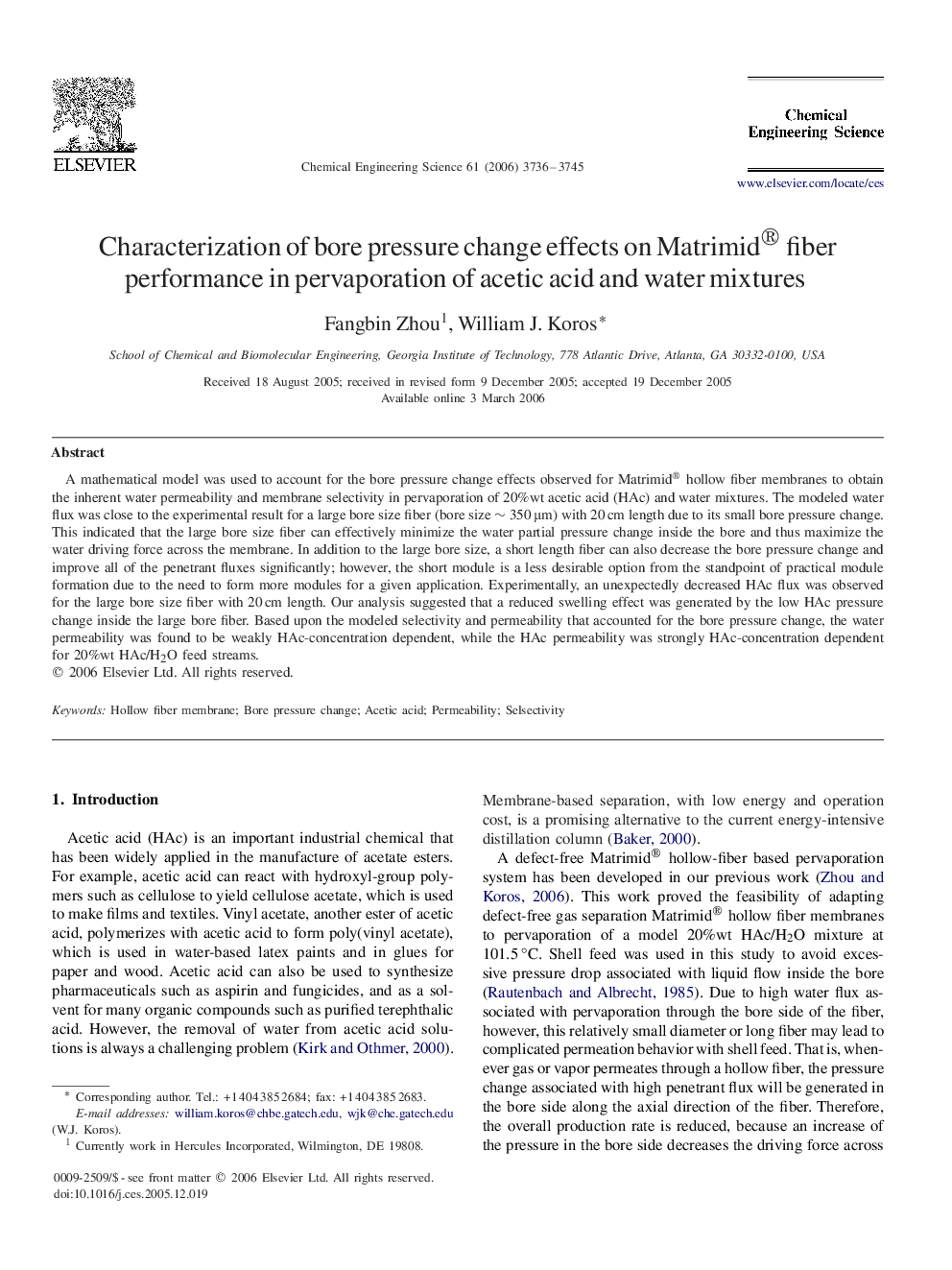| Article ID | Journal | Published Year | Pages | File Type |
|---|---|---|---|---|
| 160754 | Chemical Engineering Science | 2006 | 10 Pages |
A mathematical model was used to account for the bore pressure change effects observed for Matrimid®Matrimid® hollow fiber membranes to obtain the inherent water permeability and membrane selectivity in pervaporation of 20%wt acetic acid (HAc) and water mixtures. The modeled water flux was close to the experimental result for a large bore size fiber (bore size ∼350μm) with 20 cm length due to its small bore pressure change. This indicated that the large bore size fiber can effectively minimize the water partial pressure change inside the bore and thus maximize the water driving force across the membrane. In addition to the large bore size, a short length fiber can also decrease the bore pressure change and improve all of the penetrant fluxes significantly; however, the short module is a less desirable option from the standpoint of practical module formation due to the need to form more modules for a given application. Experimentally, an unexpectedly decreased HAc flux was observed for the large bore size fiber with 20 cm length. Our analysis suggested that a reduced swelling effect was generated by the low HAc pressure change inside the large bore fiber. Based upon the modeled selectivity and permeability that accounted for the bore pressure change, the water permeability was found to be weakly HAc-concentration dependent, while the HAc permeability was strongly HAc-concentration dependent for 20%wt HAc/H2O feed streams.
